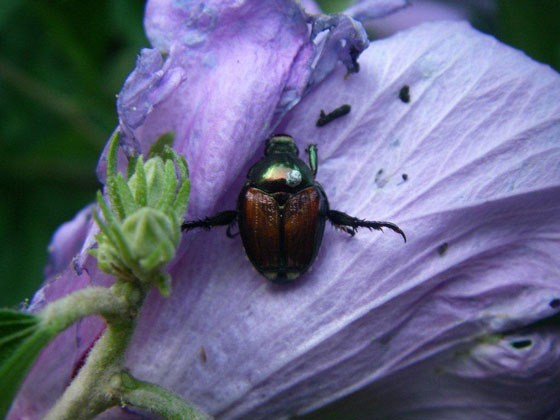When you suspect a pest is causing problems in your garden, don’t automatically
reach for the spray! First, be
sure you have a problem. Know what plant you have, find out what is typical for
the plant, and learn the common signs and symptoms of problems that affect that
type of plant.
Remember that 80 percent of all plant problems are caused by cultural and
conditional factors (lack of water, poor air circulation, too much sun, etc.),
not by pests.
Four Basic Steps
of Good Pest Control:
1. Observe
Routinely inspect your plants so you learn to recognize normal processes and
find problems early.
2. Identify and Diagnose
Identify the problem. Determine if it is caused by insects, diseases, or
environmental conditions. Look under leaves for pests, but don’t assume that
any insect you find is a pest. Then, decide whether the problem requires
treatment.
· Is the
infestation threatening the health of the plant?
· Can
you tolerate minor imperfection as a trade-off for overall balance in the
landscape?
· Does
the threat justify the possible peripheral and residual effects of treatment?
· Is the
plant so compromised that replacement (or transplanting) is the wiser option?
3. Select Appropriate Control
Methods
“Control” does not
mean extermination. Through various means, you can keep the pest population to
a level you are willing to tolerate.
4. Time your Treatment Correctly
Most insects have
complicated lifecycles with dormant or protected phases during which treatment
is useless. Information to help you target treatment effectively is available
from Penn State Cooperative Extension.
Methods of Controlling Pests:
Biological
Control
· Encourage beneficial insects such as
ladybugs, lacewings, spiders, and parasitic wasps to take up residence in your
garden.
· Use biological sprays, such as Bacillus
thuringiensis (Bt), for chewing insects, if necessary
Cultural
Control
· Clean up weeds and dead plants that can
harbor insects and diseases.
· Allow adequate space between plants and
prune for good air circulation.
·Time
plantings to avoid the peak of insect infestations.
Physical
Control
· Hand pick insects off plants.
·Use sticky traps to monitor the onset of an insect
infestation.
· Prevent weed growth by using mulches.
· Surround tender plant stems with wire
fencing or other mechanical barriers to keep out chewing pests.
Genetic
Control
· Choose plant varieties that are
resistant to pests.
Chemical
Control
· Choose pesticides that offer the widest
margin of safety for you, your children, your pets, and local wildlife.
· Carefully read and follow the
label directions before applying any pesticide.
* Nancy
Sakaduski is the Chester County Master Gardener Coordinator. Master
Gardeners are trained volunteers who educate the public on gardening and
horticultural issues. In Chester County, they operate through the Penn
State Cooperative Extension office in West Chester. Nancy lives in
Pennsbury Township. She can be reached at nds13@psu.edu.




Comments